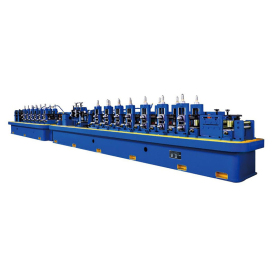[Variable Impedor Device]Exploring the Innovation and Applications of Variable Impedance Devices in Modern Electronics and Engineering
News 2024-8-12
****
Exploring the Innovation and Applications of Variable Impedance Devices in Modern Electronics and Engineering

Exploring the Innovation and Applications of Variable Impedance Devices in Modern Electronics and Engineering
What is a Variable Impedance Device?
A Variable Impedance Device is an electronic component that can alter its impedance characteristics based on external stimuli or control signals. Unlike fixed impedance devices that maintain consistent resistance, VIDs enable engineers to fine-tune the impedance to suit particular applications or conditions. This functionality is pivotal in applications where signal integrity, power management, and efficiency are critical.
The Core Technology behind VIDs
Variable Impedance Devices typically employ various technologies to achieve their adaptable characteristics. Common approaches include the use of resistive materials that can change their properties with temperature, voltage, or current variations. Other methods involve utilizing electronic circuits that selectively change the feedback or operational parameters of the device to alter impedance levels.
One example is the use of MEMS (Micro-Electro-Mechanical Systems) in creating miniature VIDs that can respond quickly to changing conditions. This technology calibration allows for precise control over the device's impedance, which is indispensable in applications that require quick response times or those that need to operate efficiently under fluctuating loads.
Applications of Variable Impedance Devices
The adaptability of Variable Impedance Devices makes them applicable in numerous fields. Here are a few key areas that have benefited significantly from this innovation:
1. **Telecommunications**

Exploring the Innovation and Applications of Variable Impedance Devices in Modern Electronics and Engineering
2. **Biomedical Engineering**
In healthcare technology, the ability of VIDs to adjust based on real-time physiological signals has transformative potential. Devices like electrocardiograms (ECGs) and bioimpedance analyzers can utilize VIDs to optimize their performance according to the specific characteristics of the biological systems being monitored. This adaptability ensures more accurate readings and efficient signal processing, which ultimately leads to better diagnostics and patient care.
3. **Audio Engineering**
In the world of audio, achieving the perfect sound quality often depends on maintaining the right impedance. Variable Impedance Devices can adjust the loading of audio amplifiers, ensuring that they deliver the best performance by matching the speaker characteristics. This adaptability helps in minimizing distortion, enhancing sound clarity, and allowing for a superior listening experience in both consumer and professional audio equipment.
4. **Power Management Systems**
In renewable energy systems, effective power management is vital for optimizing energy output. Variable Impedance Devices can be integrated into solar inverters and wind turbines to adjust the electrical load dynamically, resulting in better energy conversion and improved harvesting of renewable sources. By altering their impedance, these devices help maximize the efficiency of energy systems in real-time, accommodating variations in environmental conditions, such as sunlight or wind speed.
Future Trends and Developments
As we look ahead, the potential for Variable Impedance Devices appears boundless. With advancements in materials science, particularly in nanotechnology and smart materials, future VIDs are expected to become even more responsive and energy-efficient. The integration of machine learning algorithms may enable VIDs to predict optimal impedance settings based on historical data, further enhancing their functionality and user experience.
Additionally, the rise of the Internet of Things (IoT) will expand the application of Variable Impedance Devices into smart systems, where they can autonomously optimize performance based on real-time data inputs. For industries focusing on automation and efficiency, this may revolutionize how systems are designed and operated.
Conclusion
The Variable Impedance Device stands out as a remarkable innovation capable of transforming various sectors by offering enhanced adaptability and performance. As technology continues to evolve, VIDs will pave the way for new applications, improving system efficiency and reliability in an interconnected world. Embracing this technology could prove vital for engineers, researchers, and companies seeking to lead in their respective fields while meeting the growing demands of modern-day applications.
